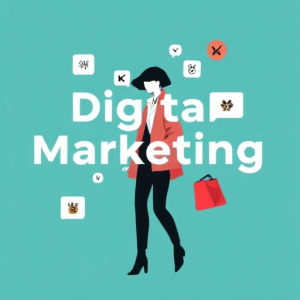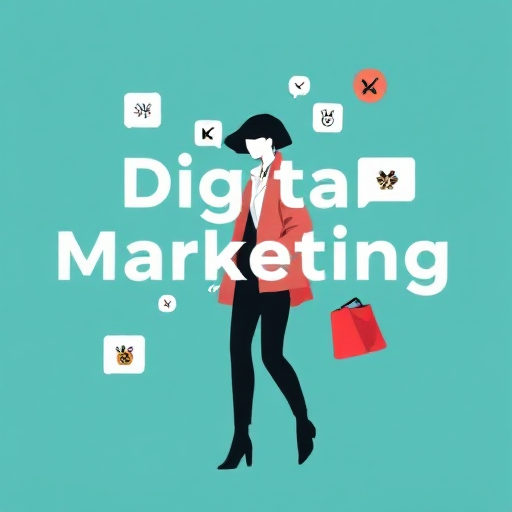
The fashion industry is highly competitive and constantly evolving. With the rapid shift to digital platforms, fashion brands must leverage digital marketing to establish a strong presence, engage their target audience, and drive sales. This guide explores essential digital marketing strategies tailored for fashion brands, including social media, influencer collaborations, SEO, email marketing, content marketing, and paid advertising.
Understanding Digital Marketing in Fashion
Digital marketing encompasses all online strategies used to promote fashion brands, products, and services. It involves a combination of organic and paid methods to enhance brand visibility, customer engagement, and sales conversions.
Key Benefits of Digital Marketing for Fashion Brands
- Global Reach – Expands market presence beyond geographical boundaries.
- Cost-Effectiveness – More affordable than traditional advertising methods.
- Targeted Advertising – Enables precise audience targeting based on demographics, interests, and behavior.
- Data-Driven Insights – Provides valuable analytics to refine marketing strategies.
- Brand Awareness & Loyalty – Builds long-term relationships with customers.
Essential Digital Marketing Strategies for Fashion Brands
1. Social Media Marketing
Social media platforms like Instagram, Facebook, TikTok, and Pinterest are essential for fashion brands.
- Instagram & TikTok: Showcase fashion trends through visually appealing content, reels, and influencer collaborations.
- Facebook: Use Facebook Ads and Groups to build brand awareness and community engagement.
- Pinterest: Ideal for fashion inspiration, allowing brands to drive traffic through stylish boards and pins.
Best Practices:
- Maintain a consistent aesthetic and branding.
- Post high-quality images and engaging videos.
- Utilize Instagram Shopping and Facebook Marketplace for direct sales.
- Leverage hashtags and trending topics.
- Engage with followers through comments, polls, and live sessions.
2. Influencer Marketing
Fashion brands thrive on influencer collaborations to reach new audiences.
- Micro-Influencers (10k-100k followers): Provide high engagement and authenticity.
- Macro-Influencers (100k+ followers): Expand brand visibility at a broader scale.
- Celebrity Endorsements: Elevate brand status but require higher investment.
Best Practices:
- Partner with influencers who align with your brand values.
- Provide unique discount codes or affiliate links.
- Encourage user-generated content.
- Run influencer takeover campaigns for exclusivity.
3. Search Engine Optimization (SEO)
A well-optimized website ensures better ranking on Google and other search engines, leading to increased organic traffic.
Key SEO Strategies:
- Keyword Optimization: Use industry-specific keywords in product descriptions, blogs, and metadata.
- Mobile Optimization: Ensure a mobile-friendly and responsive design.
- Website Speed: Optimize images and website performance for faster loading.
- Backlinks: Secure high-quality backlinks from fashion blogs and media.
- Local SEO: Optimize for location-based searches, especially for brick-and-mortar stores.
4. Email Marketing
Email marketing remains a powerful tool for personalized customer engagement.
Effective Email Campaigns:
- Welcome Emails: Introduce new subscribers to your brand.
- Promotional Campaigns: Announce discounts, limited-time offers, and sales.
- Product Recommendations: Use AI-driven personalized suggestions.
- Cart Abandonment Emails: Remind customers of items left in their cart.
- Loyalty Programs: Reward loyal customers with exclusive perks.
5. Content Marketing
Content marketing enhances brand storytelling and authority in the fashion industry.
Types of Content:
- Blog Posts: Fashion trends, styling tips, sustainability guides.
- Lookbooks: Visually appealing collections to showcase new arrivals.
- Video Content: Behind-the-scenes, styling tutorials, fashion shows.
- User-Generated Content (UGC): Encourage customers to share outfit photos and reviews.
- Interactive Content: Polls, quizzes, and shoppable posts.
6. Paid Advertising
Paid ads help fashion brands reach a wider audience quickly.
Effective Paid Ad Strategies:
- Google Ads: Display and shopping ads for search visibility.
- Social Media Ads: Instagram and Facebook ads with carousel formats.
- Retargeting Ads: Target users who visited your site but didn’t make a purchase.
- Collaborative Ads: Partner with fashion bloggers and influencers.
Measuring Digital Marketing Success
Analyzing key performance metrics is essential for refining marketing strategies.
Important Metrics to Track:
- Website Traffic – Monitor visitor count and sources.
- Engagement Rate – Track likes, shares, comments, and time spent.
- Conversion Rate – Measure how many visitors become buyers.
- Customer Retention – Track repeat purchases and loyalty.
- ROI (Return on Investment) – Assess profitability of marketing efforts.
Digital marketing is a game-changer for fashion brands looking to thrive in the online space. By leveraging social media, influencer partnerships, SEO, email marketing, content creation, and paid ads, brands can build a strong online presence, attract more customers, and drive sales. Staying up to date with trends and utilizing data-driven strategies will ensure long-term success in the competitive fashion industry.
